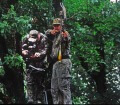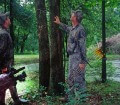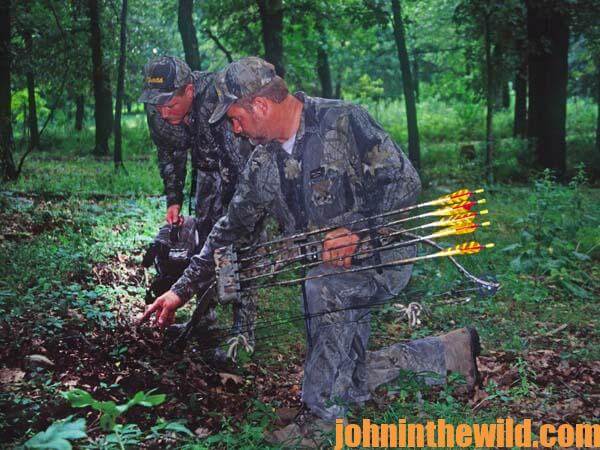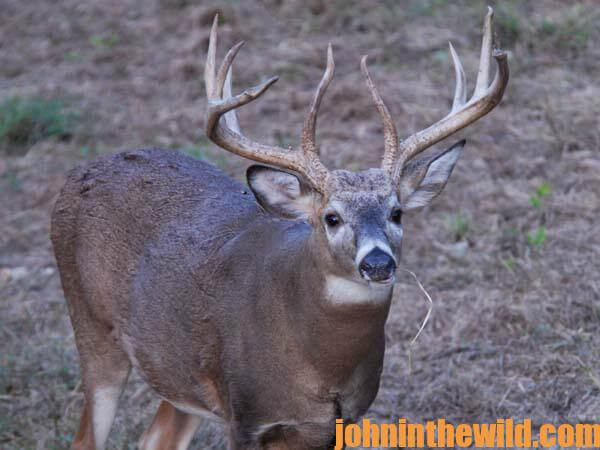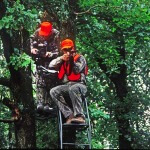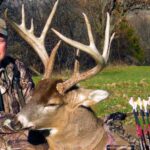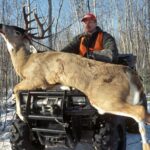John’s Note: With a video camera, you can enjoy your hunts and those of your friends over and over again, and today more and more hunters video their hunts. How can you with your home video camera produce great hunting videos like the pros do for all the great hunting shows available today on TV? How can you capture the essence of the hunt to make friends and neighbors eagerly pile up on your sofa to view your video? This week we’ll learn what four outdoor videographers say. Punky Rose of Republic, Missouri, once the video and production manager for Outland Sports, today a part of Flambeau Outdoors, is known as one of the masters of getting the shot, having videoed hundreds of hunts for videos and TV. Today Rose works with the State of Missouri.
One piece of equipment that many home videographers forget to use is a good microphone.
This microphone doesn’t have to be expensive. You can use an inexpensive mic, or if you want to spend a few extra dollars, you can get a remote mic. Having audio makes the difference between a good video and a great video.
I ask my hunters to whisper everything they’re feeling at the moment they see the deer or other game, prepare to make the shot, take the shot, follow up on the shot and recover the game, just like I’m sitting right beside them. I want to try and capture all the emotion of the hunt on the audio part of my video. A good mic will pick up the hunter’s whispers, even with the deer standing right under him. If you’re videoing a turkey hunt, the gobbler can be at 20 yards, and the hunter can continue to talk in a low voice without spooking the bird.
Too, I always use a treepod, a mechanical arm that straps to the side of a tree and acts like a tripod to hold the camera still, to get the best video footage. When I’m videoing turkeys on the ground, I mount my camera on a tripod. When you zoom in on an animal at 50 or 60 yards, even your breathing will create movement of the camera.
Also, if you can’t see the animal in the viewfinder, and the hunter is ready to take the shot, you’ll have to tell him not to shoot.
At that moment, you’ll know whether or not the hunter is committed to the video, or if he just wants to take game.
The real secret to getting a good hunting video, is what I call, “having everyone on the same page.”
Once when I was videoing a turkey hunt with Brad Harris, a longtime professional outdoorsman and star of many hunting videos and TV shows, we spotted a gobbler coming from 300-yards away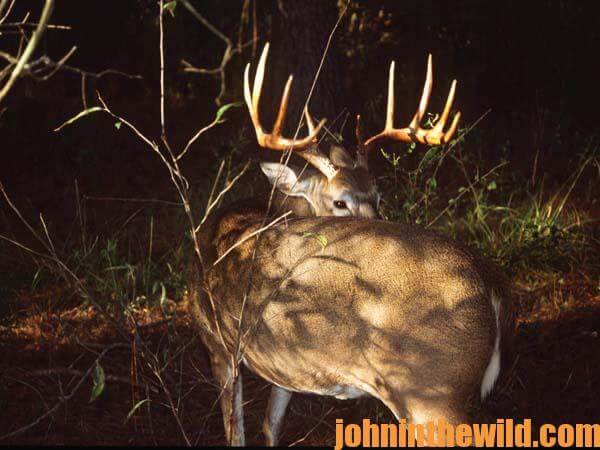 through a clear-cut. The terrain was so open that Harris and I both knew that if we moved the slightest bit we would spook the turkey. I was sitting with my feet under me, which would have been fine if the bird had come in to where we were within 10 or 15 minutes. However, after sitting in that same spot for 45 minutes without ever moving, my legs had gone to sleep and were numb. After Harris pulled the trigger, I couldn’t even stand up. From that hunt, I learned that getting in a comfortable position when I started videoing was critical to the success of my video.
through a clear-cut. The terrain was so open that Harris and I both knew that if we moved the slightest bit we would spook the turkey. I was sitting with my feet under me, which would have been fine if the bird had come in to where we were within 10 or 15 minutes. However, after sitting in that same spot for 45 minutes without ever moving, my legs had gone to sleep and were numb. After Harris pulled the trigger, I couldn’t even stand up. From that hunt, I learned that getting in a comfortable position when I started videoing was critical to the success of my video.
I’ve also realized through the years that I can’t be stingy with my video tape to make the best video possible. I suggest you shoot video of your buddy getting ready for the hunt, putting on his safety belt, loading his gun or putting arrows in his quiver. Also get a panoramic shot of the land where you’re hunting, and shoot an interview with the hunter after he’s taken the game to get his insights. You may get to video the hunt of a lifetime. So, go ahead, and take that extra footage that will really tell the story of the hunt.
To learn more about deer hunting, you can get John E. Phillips’ Kindle eBooks, “How to Hunt Deer Up Close: With Bows, Rifles, Muzzleloaders and Crossbows,” “PhD Whitetails: How to Hunt and Take the Smartest Deer on Any Property,” “How to Take Monster Bucks,” and “How to Hunt Deer Like a Pro,” or to prepare venison, get “Deer & Fixings.” Click here.
Share this page with a friend!
About the Author
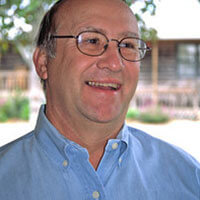 John Phillips, winner of the 2012 Homer Circle Fishing Award for outstanding fishing writer by the American Sportfishing Association (ASA) and the Professional Outdoor Media Association (POMA), the 2008 Crossbow Communicator of the year and the 2007 Legendary Communicator chosen for induction into the National Fresh Water Hall of Fame, is a freelance writer (over 6,000 magazine articles for about 100 magazines and several thousand newspaper columns published), magazine editor, photographer for print media as well as industry catalogues (over 25,000 photos published), lecturer, outdoor consultant, marketing consultant, book author and daily internet content provider with an overview of the outdoors.
John Phillips, winner of the 2012 Homer Circle Fishing Award for outstanding fishing writer by the American Sportfishing Association (ASA) and the Professional Outdoor Media Association (POMA), the 2008 Crossbow Communicator of the year and the 2007 Legendary Communicator chosen for induction into the National Fresh Water Hall of Fame, is a freelance writer (over 6,000 magazine articles for about 100 magazines and several thousand newspaper columns published), magazine editor, photographer for print media as well as industry catalogues (over 25,000 photos published), lecturer, outdoor consultant, marketing consultant, book author and daily internet content provider with an overview of the outdoors.

